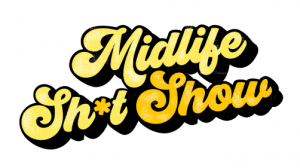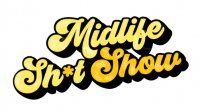When other kids got to go to summer camp, your illustrious co-host Lara was treated to transcendental meditation camp. Yeah, really. So this piece has her feeling both nostalgic and craving carob brownies. Today we’re taking a dip into the world of Guided Imagery all in the name of helping you rock your wellness game.
Guided Imagery, also known as visualization (but not actual transcendental meditation, that one comes later folks) is a powerful tool for increasing your Relaxation Response. That in turn can help with things like reducing pain, tapping into your creativity, managing stress, and may even improve your brain health. BOOM!
Here’s one for the nerds… studies have shown that neural patterns created by imagining an experience are similar to those created when actually having the experience. Okay, but why do we need to know this? It’s like building a house of knowledge, people. Knowing that we can choose our emotions and guide our own responses by taking control what to experience is like having the whole power of Grey Skull right in your hands… no sword required. Here is how we build that mind place of Guided Imagery;
Be Intentional
No one would attempt to build something using just the directions with no idea what they were building. The same goes for using guided imagery. You need to know what you are intending to “build.” Do you hope to lower your blood pressure or reduce stress? Perhaps you’re looking to have more energy or get better sleep. Intention, what you’d like to get out of guided imagery, should always be your starting point.
Be Imaginative
The imagination is an amazing thing and a key tool in guided imagery. While there are a plethora of books, apps, and guides out there that are intended to help with this practice, all you really need is your imagination. Use that tool to help you visualize a place or event that evokes joy, calm, contentment, or any feeling that relates to your intention. Think of the actual place where you felt these feelings. Build that place visually in your mind’s eye and allow the memories to flow. Sometimes those memories will come in sprinkles like soft rain. The more you practice this the stronger the wave of positive feelings.
Be Adventurous
What would you try today if you knew you couldn’t fail at it? Would you go skydiving, set out on safari, pick up a paintbrush, or camera? Guided imagery is the one place you’re guaranteed zero failures. Use that knowledge to help you build, not just on memories, but on aspirations. Try new things through visualization and see where the emotions take you.
Set and See Your Goals
Now that you know how to engage your imagination and expand it by being adventurous, the next step is setting and actually visualizing your goals. This can be as simple as a daily goal to sleep better or as lofty as mastery of a new skill. You can have several goals for a spectrum of guided imagery sessions. Think of it as creating a library inside your mind from which you can check out any book you’d like that suits the goal of that day’s needs.
Getting Started
Just like we do with other types of meditation, we begin with the breath. Take several deep, lung-filling breaths and release them slowly – start with five. On your last breath, close your eyes. Breath again in the same pattern without asking the mind to “see” anything. Just focus on the breath at first. When you’re ready, start to imagine the place or activity that you’d like to experience, building a picture in your mind. Stay with that imagery for as long as you can. Continue to breathe as you let go of tension in the body and allow your mind to wander through the images you’re creating.
Don’t expect that you’ll be able to create something akin to a movie in your mind. As with most things, guided imagery takes practice. You’ll get better over time. Start with 5 or 10 minutes sessions and build your way up to extending the length of time you practice.
Tip: If you have time after your session, journal about it. Write down what you were visualizing and how you were feeling. Before you start your next session, read the journal entry from your previous one. Think of it as a bookmark in your imagination.
Online Resources for Guided Imagery & Visualization
Brain Sync with Kelly Howell (on YouTube and at brainsync.com)
TinyBudda.com
10-Minute Guided Imagery Scripts from City of Hope (on YouTube)
InsightTimer.com




